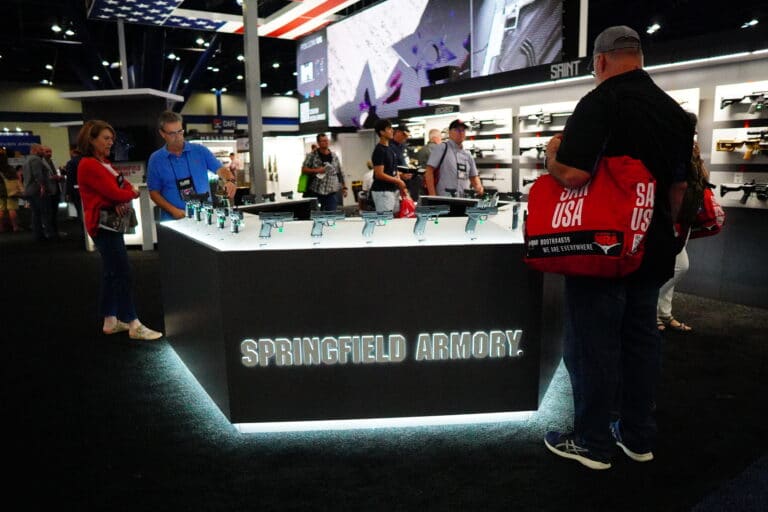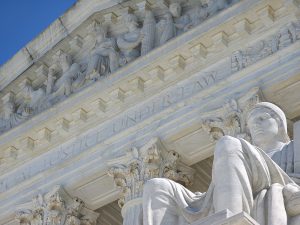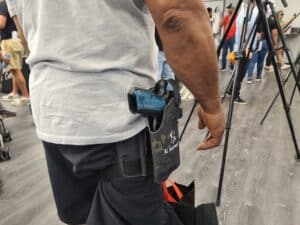A major gunmaker cannot be held liable for the accidental shooting death of a Pennsylvania juvenile, the state’s high court ruled on Monday.
The Pennsylvania Supreme Court unanimously dismissed a liability lawsuit against Springfield Armory over the negligent shooting of one young teenager by another. The court determined that the federal Protection of Lawful Commerce in Arms Act (PLCAA), which generally prohibits lawsuits against the gun industry for harms caused by third parties, is a valid exercise of Congressional authority and bars such suits from proceeding.
“We granted allowance of appeal to address whether the PLCAA operates to bar the Gustafsons’ action and, if so, whether the PLCAA is constitutional under the Commerce Clause and the Tenth Amendment of the United States Constitution and principles of federalism,” Justice Sally Updyke Mundy wrote in Gustafson v. Springfield. “After careful and sober consideration, we answer those questions affirmatively.”
The ruling deals a blow to gun-control advocates aiming to dismantle the firearms industry’s liability protections. It also continues the industry’s winning streak in constitutional challenges to the PLCAA at appellate courts around the country.
The lawsuit stems from a March 2016 incident in which a 14-year-old accidentally shot and killed his 13-year-old friend while handling a Springfield pistol that was left unsecured by its owner. The 14-year-old claimed that he had removed the magazine first and pulled the trigger because he thought he had unloaded it. He was ultimately “adjudicated delinquent” of involuntary manslaughter in juvenile court, which means he committed a delinquent act and requires “treatment, supervision, or rehabilitation”.
Gustafson’s parents filed a lawsuit against Springfield and Saloom Department Store, which initially sold the weapon to its legal owner. The suit accused the two gun businesses of “negligent design and sale,” “negligent warnings and marketing in relation to the Firearm,” and asserted a defect in Springfield’s design because the gun could fire without a magazine inserted. They further said that all of these factors were the “proximate cause” of their son’s death.
A trial court initially dismissed their suit with prejudice after ruling that the PLCAA prohibited it. However, an en banc panel for the state’s intermediate court reinstated the case in 2022. Springfield asked the Pennsylvania Supreme Court to review that decision and decide once and for all whether the Gustafsons’ legal claims could proceed under the PLCAA and whether the statute itself is constitutional in state courts.
On the statutory front, the plaintiffs argued that their suit should continue because, in their reading, the PLCAA only bars suits against harms caused “solely” by third parties, not in cases in which criminal action and gun company conduct combined lead to a harm. They further argued that their suit fit within the PLCAA’s “product liability exception” because they said the discharge of the firearm was neither a “volitional act” nor a “criminal offense.”
The court rejected those arguments. It said that juvenile sanctions count as a criminal offense and that an unintentional discharge can still be volitional because the 14-year-old chose to point the gun at the victim and pull the trigger.
“We conclude that Plaintiffs’ alleged harm resulted from the Juvenile’s ‘criminal or unlawful misuse’ of the Firearm and, as such, their action constitutes a ‘qualified civil liability action’ pursuant to the PLCAA,” Mundy wrote. “Based on the above analysis, we determine that the product liability exception does not exempt Plaintiffs’ Complaint from the PLCAA’s definition of a ‘qualified civil liability action.’ The PLCAA, therefore, bars Plaintiffs’ Complaint.”
Turning to the constitutional analysis, the court rejected each of the plaintiffs’ arguments out of hand. The court said that the PLCAA was a proper exercise of its enumerated powers because lawsuits against the gun industry pose a burden on the interstate firearms trade. As for the Tenth Amendment, the court said that the PLCAA does not prevent states from passing their own legal liability regimes; it only sets a floor for preempting specific liability actions in state and federal courts.
“States remain free, either through their legislatures or their courts, to recognize any cause of action they deem appropriate,” Mundy wrote. “All the PLCAA, including the predicate exception, does is preempt certain causes of actions involving the firearms industry.”
The firearms industry praised the decision reached by the court. The National Shooting Sports Foundation, the industry’s trade group, said that while it was sympathetic to the “heartbreaking loss” experienced by the plaintiffs, lawful gun businesses were not ultimately to blame for it.
“NSSF is pleased by the Pennsylvania Supreme Court’s decision holding that the PLCAA is constitutional and prevents lawsuits that attempt to blame members of the firearm industry for the criminal misuse of a lawfully sold firearm,” Larry Keane, NSSF General Counsel, said in a statement. “While we are sympathetic to the heartbreaking loss the Gustafson family suffered, this tragic incident was the result of the criminal misuse of the firearm and the irresponsible negligence of the owner of the firearm who failed to safely secure it to prevent unauthorized access by an unsupervised juvenile.
Global Action on Gun Violence, a group dedicated to probing the gun industry’s liability shield, argued the case on behalf of the Gustafsons. It did not respond to a request for comment.






